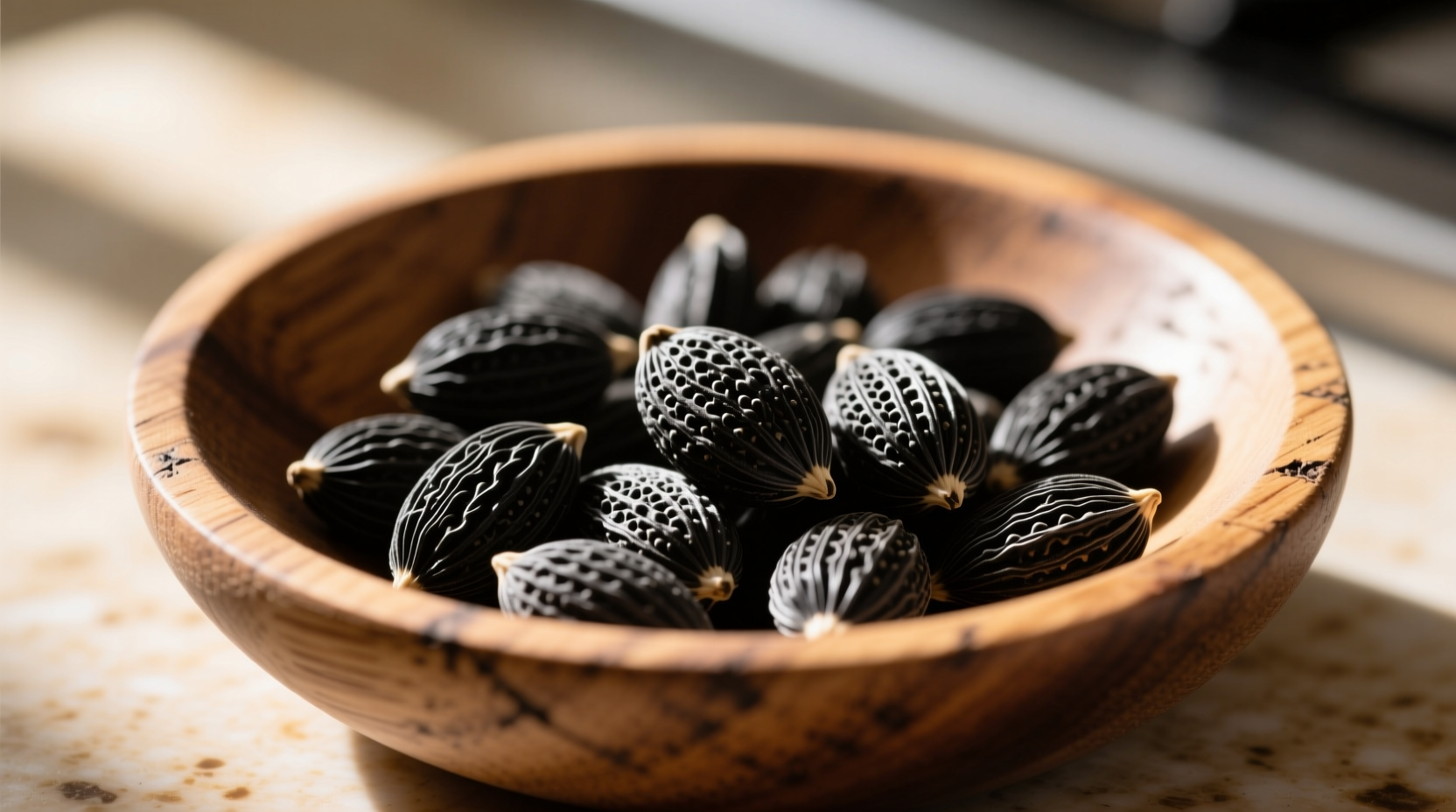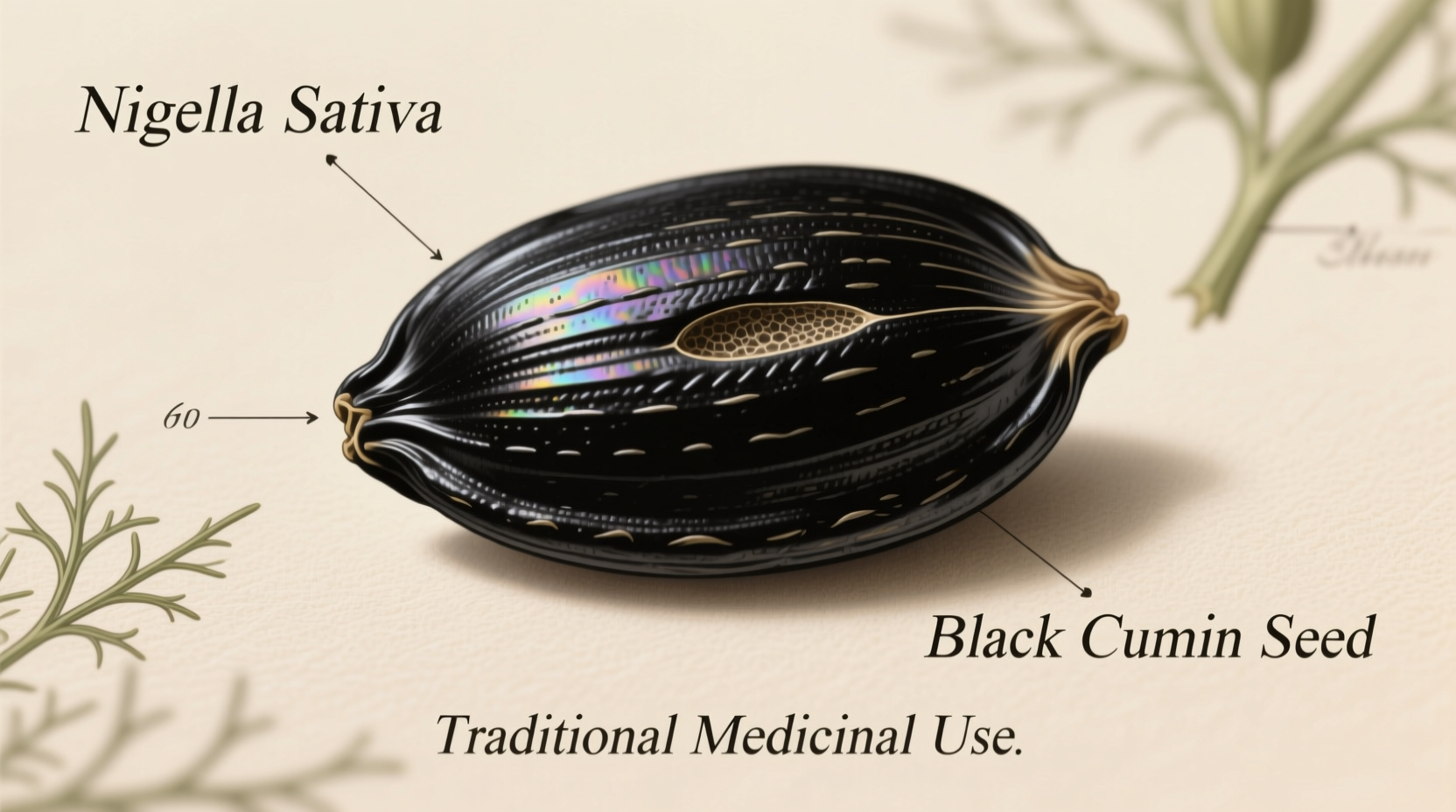When you ask what is black seed, you're exploring one of history's most enduring culinary and traditional botanicals. These tiny black seeds pack remarkable complexity in both flavor and cultural significance. Let's examine what makes black seed unique, where it comes from, and how to use it properly in your kitchen.
Botanical Identity: What Exactly Is Black Seed?
Nigella sativa, the scientific name for black seed, grows as an annual herb reaching 20-30 cm in height with delicate blue or white flowers. The seeds themselves are matte black, angular, and measure just 2-3 mm long. Each seed pod contains numerous seeds arranged in a distinctive crescent pattern.
The plant thrives in Mediterranean and Southwest Asian climates, particularly in countries like Egypt, Turkey, India, and Syria. According to the USDA Agricultural Research Service, Nigella sativa requires well-drained soil and moderate temperatures to produce optimal seed quality. The seeds contain approximately 30-40% fixed oil, 1-2% essential oil, and various bioactive compounds including thymoquinone.

Historical Timeline: Black Seed Through the Ages
Black seed's journey through human history reveals its enduring value across civilizations:
- 1325 BCE: Seeds found in Egyptian pharaoh Tutankhamun's tomb, indicating ancient medicinal and ritual use
- 5th century BCE: Greek historian Herodotus documents Nigella use in Egyptian cooking
- 7th century CE: Islamic tradition records Prophet Muhammad recommending black seed as a remedy for "all diseases except death"
- 10th century: Persian physician Avicenna describes black seed's digestive and respiratory benefits in The Canon of Medicine
- 16th century: European herbalists adopt black seed for treating headaches and toothaches
- Modern era: Scientific research investigates traditional claims while culinary use expands globally
Black Seed vs. Confusingly Similar Seeds
Many people search is black seed the same as kalonji or black seed vs black cumin. This comparison table clarifies common confusions:
| Seed Type | Scientific Name | Flavor Profile | Primary Culinary Regions |
|---|---|---|---|
| Black Seed | Nigella sativa | Nutty, peppery, subtle onion notes | India, Middle East, Mediterranean |
| Black Cumin | Bunium bulbocastanum | Sweeter, earthier, less pungent | Central Asia, some Indian regions |
| Regular Cumin | Cuminum cyminum | Warm, earthy, distinctive aroma | Global, especially Latin America, India |
| Black Sesame | Sesamum indicum | Nuttier, milder, less complex | East Asia, increasingly global |
Culinary Applications: How to Use Black Seed Properly
Understanding black seed in cooking reveals why chefs prize these tiny seeds. Unlike many spices, black seed develops optimal flavor when heated rather than raw:
- Bread baking: Sprinkle on naan, roti, or Middle Eastern flatbreads before baking
- Tempering: Heat in oil first to release flavors before adding other ingredients (common in Indian cooking)
- Spice blends: Essential component in panch phoron (Bengali five-spice mix) and baharat (Middle Eastern blend)
- Cheese enhancement: Traditional addition to Turkish white cheese and some Middle Eastern cheeses
- Pickling: Adds complexity to pickled vegetables and onions
Professional chefs recommend using black seed sparingly—1/4 to 1/2 teaspoon per dish—as its flavor can dominate. The seeds should appear matte black; shiny seeds often indicate improper storage or age. For maximum flavor, lightly toast whole seeds before use, but avoid over-toasting which creates bitterness.
Traditional Uses and Current Understanding
When researching black seed benefits, it's crucial to distinguish between historical traditional use and current scientific understanding. Ancient cultures employed black seed for:
- Digestive support in Ayurvedic and Unani medicine
- Respiratory relief in Egyptian and Greek traditions
- Skin applications across Middle Eastern cultures
- General wellness promoter in multiple traditional systems
Modern research, including studies published in the Journal of Ethnopharmacology, has investigated these traditional claims. While preliminary studies show interesting properties, experts at the National Center for Complementary and Integrative Health emphasize that more rigorous human trials are needed before making definitive health claims. Current understanding suggests black seed may support general wellness when consumed as part of a balanced diet, but should not replace medical treatment for specific conditions.
Practical Selection and Storage Guidelines
For those exploring what is black seed called in different regions, knowing how to select quality seeds matters. Follow these practical guidelines:
- Visual inspection: Look for uniform matte black color (shiny seeds indicate age or poor storage)
- Aroma test: Fresh seeds should have a distinctive peppery, slightly onion-like scent
- Texture: Should feel dry and brittle, not oily or sticky
- Purchase quantity: Buy small amounts (1-2 months' supply) as seeds lose potency over time
- Storage: Keep in airtight container away from light and heat; refrigeration extends shelf life
When properly stored, black seed maintains optimal flavor for 6-12 months. Ground black seed loses potency much faster than whole seeds, so grinding just before use delivers the best flavor experience.
Safety Considerations and Usage Limits
Understanding the context boundaries for black seed usage ensures safe enjoyment:
- Pregnancy: Avoid medicinal quantities during pregnancy as it may stimulate uterine contractions
- Medication interactions: May interact with blood pressure medications and diabetes drugs
- Allergies: Rare but possible, especially for those sensitive to plants in the Ranunculaceae family
- Culinary vs. medicinal use: Culinary amounts (1/4-1/2 tsp) in food are generally recognized as safe; concentrated supplements require medical consultation
The European Food Safety Authority notes that typical culinary usage presents minimal risk for most adults. As with any botanical, moderation is key—excessive consumption may cause digestive upset. Always consult your healthcare provider before using black seed medicinally, especially if managing health conditions or taking medications.











 浙公网安备
33010002000092号
浙公网安备
33010002000092号 浙B2-20120091-4
浙B2-20120091-4